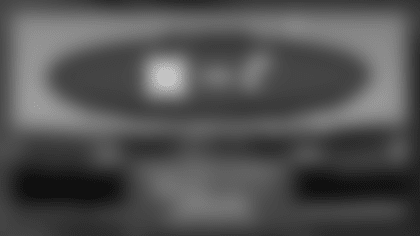There are several new rules and points of emphasis in 2015:
Extra point: The extra point attempt will now be snapped from the 15-yard line. Two point-conversions will remain at the two-yard line. Additionally, the defense will be able to return a blocked kick, interception or fumble for two points.
Injury timeout: The independent ATC (certified athletic trainers) spotters located in the press box are allowed to notify game officials to stop the game if a player exhibits obvious signs of disorientation or is clearly unstable, and it becomes apparent that the player will remain in the game. The game will be stopped immediately and the player will leave the game to be evaluated by the medical staff. This process will only take place if both the game officials and the medical staff fail to recognize the potential injury. Game officials have been directed to be diligent in this area and will stop the game when a player appears to be disoriented so he can get medical attention.
Unnecessary roughness: In the interest of player safety, several adjustments were made to the unnecessary roughness rule…Defenseless player protections are expanded to the intended receiver of a pass following an interception or potential interception. A receiver who is clearly tracking the football and is in a defenseless posture will receive defenseless player protections…Rules prohibiting illegal "peel back" blocks extend to all offensive players…All chop blocks involving a back are eliminated to give defenders additional protection from low blocks…The prohibition against pushing teammates into the offensive formation is extended to punt plays.
All rules that encourage player safety will continue to be strictly enforced. The focus is on eliminating these tactics from the game. Players must avoid hitting or blocking opponents in the head or neck area, or using the crown or hairline parts of the helmet to make forcible contact anywhere on the body. Sportsmanshipis always a point of emphasis. The use of abusive, threatening or insulting language directed at opponents, teammates, coaches, officials or representatives of the league is covered under unsportsmanlike conduct playing rules. This includes racial slurs, comments regarding sexual orientation or other verbal abuse.
The language pertaining to a catch was clarified to provide a better understanding of the rule. In order to complete a catch, a receiver must clearly become a runner. He does that by gaining control of the ball, touching both feet down and then, after the second foot is down, having the ball long enough to clearly become a runner, which is defined as the ability to ward off or protect himself from impending contact. If, before becoming a runner, a receiver falls to the ground in an attempt to make a catch, he must maintain control of the ball after contacting the ground. If he loses control of the ball after contacting the ground and the ball touches the ground before he regains control, the pass is incomplete. Reaching the ball out before becoming a runner will not trump the requirement to hold onto the ball when you land. When you are attempting to complete a catch, you must put the ball away or protect the ball so it does not come loose.













